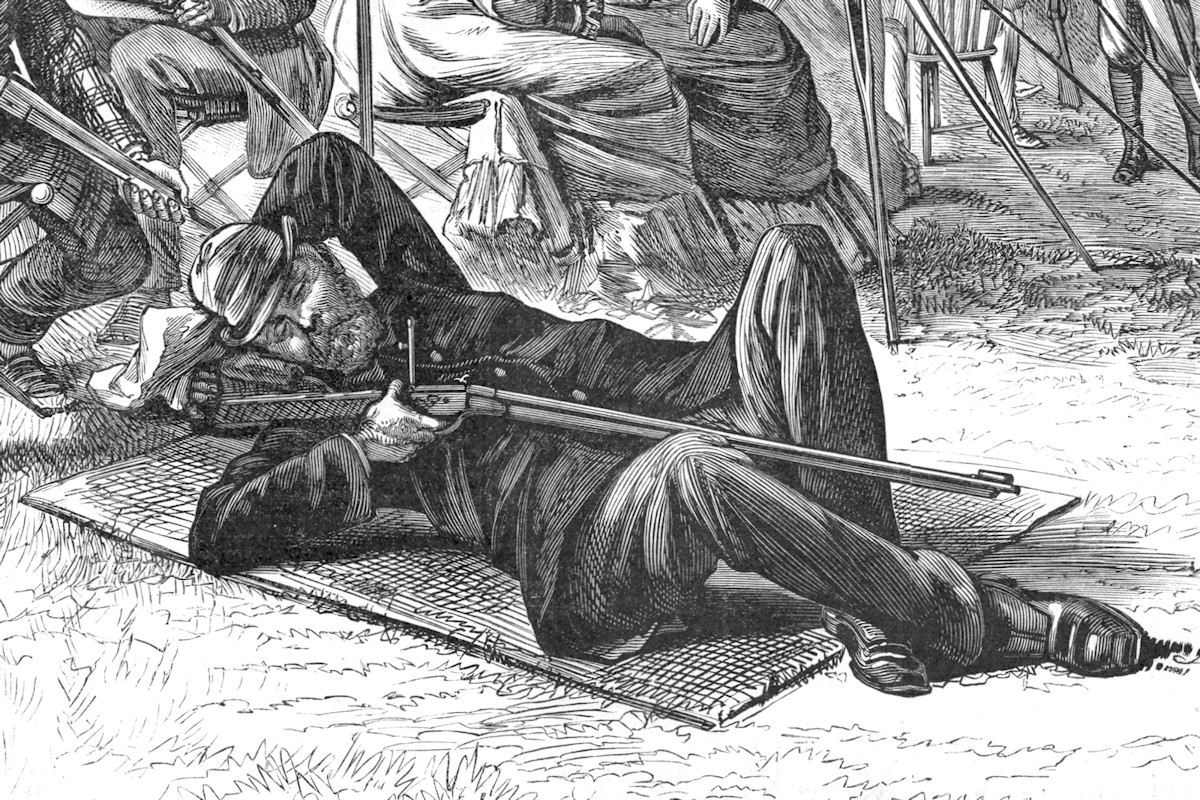The Black Powder Cartridge Rifle Reloading Guide: Powder Selection.
Category: Marksmanship
Military marksmanship and target shooting. Instruction and historical.
Browse the latest posts below, or see:
BPCR Guide: Bullet & Primer
The Black Powder Cartridge Rifle Reloading Guide: Bullet Selection and Primers.
Black Powder Cartridge Rifle Reloading Guide
This is a different kind of reloading instruction text. You will not just be advised how to do things but you will also be given the reason why it is done that way. The shooting of black powder cartridge rifles is a great challenge and one which has very few finite rules. It involves almost continual experimentation with old and new components and equipment.
How to Use Tang Type Rear Sights and Insert Type Front Sights
Young eyes usually have little trouble using the rear tang sight which has a single pin hole or the “Hadley type” eye cup which has many pin holes of increasing sizes. The following instructions apply to both young and old eyes but there is need for special advice for older eyes.
Paper Patched Observations at the 2008 American Creedmoor Cup
This past week [2008], a coterie of hardy souls attended the American Creedmoor Cup (ACC) at the Ben Avery Range, 23 miles north of the I-17 / I-10 interchange located in Phoenix, AZ. This particular 2-day BPCR long-range match (800, 900 and 1,000 yards) is unique in the USA that no coaching is allowed once the competitor hits the target while shooting sighters. Only 2 more sighters are allowed after hitting the target for the first time whether they hit the target or not before the competitor must go for score. And, each shooter has only 20 minutes to fire sighters and 10-shots for record so waiting for a condition is not a workable option most of the time. This is a real rifleman’s game where one must turn the windage and elevation knobs quickly and precisely to stay in the game.
Another Day the Paper-Patch Way
Today more PP testing was done to refine the load shot at the American Creedmoor Cup as well as do some testing with the 45-cal BACO PP bullet. A 0.4410″ diameter PP mold was the prize for being high PP shooter at The Cup. The bullet actually mics at 0.4424″ when cast in 20-1, which was the only alloy tested today. The 16-twist, 45-90 with a replica of an original Sharps PP match chamber was used as the test platform. A number of different powder charges using Swiss Fg and 1.5 were tested.
Headwind & Tailwind Effects on Elevation at 1,000 yards
Headwind-tailwind effects have been a topic of discussion with shooters. While spotting/coaching special attention has been paid to try and better understand and quantify these effects on our bullets’ trajectories.
Bullet Stability
The issue of BPCR bullet stability has been quite the puzzlement, for quite a while, to this crank. For the past 6 years there has been a considerable focus on optimizing bullet design for a given twist and vise-versa. Some solidification of understanding is starting to take place through extensive testing by shooting bullets through heavy corrugated cardboard at distances from 50 yards to 1,000 yards and applying a measurement technique to estimate bullet yaw angle or wobble about its center of mass or gravity. The short story is, all is not as it would seem.
BPCR Lube Thoughts and Findings
The topic of what a BPCR lube does and how it does it is often the topic of conversation; at matches, over the phone and online. Those of us that have shot BPCR for a while know that accuracy degrades rapidly without a good lube as well as either wiping or blow-tubing between shots. After several years of extensive research, experimentation and thinking about BPCR lubes and how to make them better some general conclusions have been drawn.
Black Powder Cartridge Rifle
INDEX. The shooting of black powder cartridge rifles is a great challenge and one which has very few finite rules. It involves almost continual experimentation with old and new components and equipment. For short range hunting and target practice, simple and proven reloading methods will provide suitable ammunition and accuracy. For those who want to surpass that level, specialized and developed handloads will always produce a significant improvement, just as it does with reloading for modern smokeless powder arms.
Enfield Optics
Problems with open sights for the shooter past the first flush of youth. The available remedy is a convex spectacle lens which is only just strong enough to clarify the foresight. This produces the least fuzziness to the aiming mark but fuzzier it will certainly be. The rear sight will still be vague but slightly improved. In my case, was this imperfect compromise becoming so bad that sighting errors were causing the problems or had my bedding gone sour or what?
Euroarms Volunteer: Disassembly Assembly
When you first remove the barrel from the stock, what appears to be step one is to unscrew the tang/”breech plug” from the bolster. If you do that one then sees a recessed “plug” flat on two sides. We first tried to remove that with no success. I then ordered a parts diagram from Eurorarms – which showed the tang/breech plug, the bolster and the barrel. It did not show the threaded center that actually holds the bolster onto the barrel and into which the tang is screwed. This is the piece that actually has the chamber cut into it on one end and is solid on the other. We’ll call it the “chamber”.
